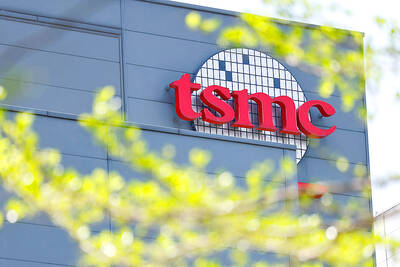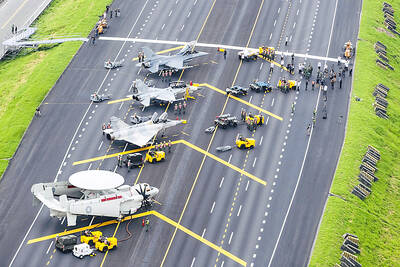It is mid-December in corporate America, and people are partying, not deal-making. They are sending corporate gifts, not prospectuses. They are taking those saved vacation and personal days, not working overtime.
Clearly, they are not working for the FedEx Corp. December vacations? Don't be ridiculous: All of the sorters and the managers, not to mention hundreds of extra part-timers, are on hand -- or at least on call. Lazy afternoons after long holiday lunches? Ha! Every day, from last week through Christmas, FedEx managers spend afternoons on international conference calls, giving one another early alerts on possible delays. And forget about down time for maintenance crews. Sure, by December they have inspected or repaired every one of FedEx's 600 planes and most of its 70,000 trucks, but they, too, must be ready for the inevitable surprises.
"We've got to work our people pretty hard to guarantee that every child gets her Christmas doll on time," said Michael Glenn, executive vice president of FedEx.
Glenn calls the weeks before Valentine's Day and Mother's Day "nice trial runs" for Christmas. In August, there is the blitz of back-to-school wares being shipped to retailers. In November, a mountain of merchandise is delivered to stores preparing for the holiday shopping season.
But for the FedEx system as a whole, last Monday night, in the middle of December, was the mother of all peaks, when the beginning of the most hectic time for air delivery overlapped with the end of the busiest season for ground deliveries. On a typical day, 5 million packages move through FedEx's 161 hectare national hub at Memphis International Airport; on Monday, the total was 7.5 million.
Small wonder that FedEx employees, whether executives, operations gurus or hands-on airport workers, tend to use the same expression -- "controlled chaos" -- in talking about life on peak night.
It takes a while to know just what they mean. Start touring FedEx's hub at 9.30pm on peak night, Dec. 15, and everything seems deceptively quiet. The first planes have not yet arrived. FedEx shuttle buses from the employee parking lot are just starting to disgorge workers at security checkpoints.
But starting around 11 o'clock, things get cracking. Planes fly in, as many as 55 an hour. (Each has the name of a FedEx employee's child emblazoned on its side.) Wheeled tugs pull trains of dollies carrying containers packed with hundreds of packages. Other workers are unloading those containers, shoveling as many as 3,000 packages an hour onto the hub's 322km of conveyor belts, which seem to tumble them willy-nilly into any number of sorting areas.
"It may look like chaos, but this is a well-conditioned, well-organized machine," said Reginald Owens Sr, vice president of Memphis hub operations.
Indeed, after a few hours, even the uninitiated can pick up on the rhythm of the place. Think it's a random decision to put employees sorting packages aimed at Sacramento, California, right next to those with packages going to Fort Lauderdale, Florida? No. Memphis is on Central time, so it has much less leeway when shipping to the East Coast, where it is an hour later, than to the West Coast, where it has two extra hours to play with. If there is a delay, the workers on the West Coast line can turn quickly to help the ones hustling to meet East Coast deadlines. Even if there are no glitches, it makes sense to load the East Coast flights first, then have the workers turn around and load the West Coast flights when they are done.
In short, if something is within FedEx's control, it is planned for, rehearsed and rehearsed again. But even the best plan cannot account for all the unknowns.
"Planning for peak starts the night after it's over, and it never stops," Glenn said, speaking from the relative calm of FedEx's corporate headquarters, 24km from the hub. "But the one thing we know is that, with all the planning, we're going to be wrong."
FedEx files its peak-night flight plan with the Federal Aviation Administration 45 days in advance, "but we're tinkering with it to the last minute," said John Dunavant, managing director for global operations control.
As a plane rolls in, a 15-person team armed with hand-held scan-ners is waiting. A few team mem-bers board the plane and guide multi-tonne containers from the body and belly of the craft to the offloading machines. As soon as the containers reach the ground, other team members start switching them to the dollies. The total unloading time is 20 minutes, tops.
Off go the trains of dollies to the "input" areas, where the containers are unloaded and unpacked. Teams of workers place unwieldy packages on a slow-moving conveyor belt, from which other employees pluck them according to the ZIP codes on the address labels. But most packages go onto fast-moving belts that take them to the heart of the "matrix," the main "output" area. (FedEx people swear that they were using the "matrix" name long before the movie gave it panache.)
Along the way, electronic eyes "read" the destinations and shunt the packages off to one of 12 secondary belts, arranged by ZIP code. (From the time a package is picked up from a customer to the time it is delivered, it is scanned by someone or something a minimum of 12 times; international packages may be scanned 23 times.)
For most of the night, prominent monitors scattered throughout the hub display a big yellow number: 2:07. That is supposedly Zero Hour, the time at which all incoming packages must be on the conveyor belts so that every outbound plane can be loaded in time to make its next-day delivery guarantee.
Well, not exactly. Actually, the FedEx engineering department has already taken into account the anticipated record volumes, intermittent spots of bad weather and high winds in Memphis that day. They know, for example, that because of the winds, many planes will have to land to the south of their usual runways, and to taxi an extra 20 minutes to their appointed gates. So, they have set 2:43am as the actual drop-dead deadline, but they don't want anyone to know that until they have to.
Somewhere around 1:15am, they change the monitors to say 2:20. At 2am it is moved to 2:30. But around 2:30am, the monitors say 2:43, and the color will be red -- a tip-off that this is no longer a movable target.
This night, the hub makes its deadline, and by 3am, planes are starting to take off on schedule. Finally, employees can slow down.
But not for long. Come January, there is another peak looming -- for all the unwanted or damaged or otherwise rejected stuff that people want to return to stores. And it is almost time to start planning for next year's anticipated peak night.

EUROPEAN TARGETS: The planned Munich center would support TSMC’s European customers to design high-performance, energy-efficient chips, an executive said Taiwan Semiconductor Manufacturing Co (TSMC, 台積電), the world’s largest contract chipmaker, yesterday said that it plans to launch a new research-and-development (R&D) center in Munich, Germany, next quarter to assist customers with chip design. TSMC Europe president Paul de Bot made the announcement during a technology symposium in Amsterdam on Tuesday, the chipmaker said. The new Munich center would be the firm’s first chip designing center in Europe, it said. The chipmaker has set up a major R&D center at its base of operations in Hsinchu and plans to create a new one in the US to provide services for major US customers,

The Ministry of Transportation and Communications yesterday said that it would redesign the written portion of the driver’s license exam to make it more rigorous. “We hope that the exam can assess drivers’ understanding of traffic rules, particularly those who take the driver’s license test for the first time. In the past, drivers only needed to cram a book of test questions to pass the written exam,” Minister of Transportation and Communications Chen Shih-kai (陳世凱) told a news conference at the Taoyuan Motor Vehicle Office. “In the future, they would not be able to pass the test unless they study traffic regulations

GAINING STEAM: The scheme initially failed to gather much attention, with only 188 cards issued in its first year, but gained popularity amid the COVID-19 pandemic Applications for the Employment Gold Card have increased in the past few years, with the card having been issued to a total of 13,191 people from 101 countries since its introduction in 2018, the National Development Council (NDC) said yesterday. Those who have received the card have included celebrities, such as former NBA star Dwight Howard and Australian-South Korean cheerleader Dahye Lee, the NDC said. The four-in-one Employment Gold Card combines a work permit, resident visa, Alien Resident Certificate (ARC) and re-entry permit. It was first introduced in February 2018 through the Act Governing Recruitment and Employment of Foreign Professionals (外國專業人才延攬及雇用法),

‘A SURVIVAL QUESTION’: US officials have been urging the opposition KMT and TPP not to block defense spending, especially the special defense budget, an official said The US plans to ramp up weapons sales to Taiwan to a level exceeding US President Donald Trump’s first term as part of an effort to deter China as it intensifies military pressure on the nation, two US officials said on condition of anonymity. If US arms sales do accelerate, it could ease worries about the extent of Trump’s commitment to Taiwan. It would also add new friction to the tense US-China relationship. The officials said they expect US approvals for weapons sales to Taiwan over the next four years to surpass those in Trump’s first term, with one of them saying